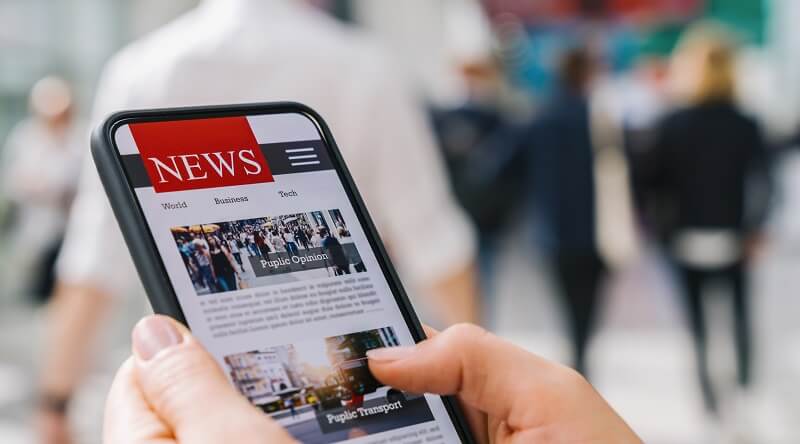Popular News Fundamentals Explained
What Does Popular News Do?
Table of ContentsThe Single Strategy To Use For Popular NewsGet This Report on Popular NewsEverything about Popular NewsPopular News for Dummies
Age is also a consider the method people view the function of social media. Younger social media sites information consumers are more probable to state it has impacted their discovering right. Regarding half of social networks information consumers ages 18 to 29 (48%) say news on social media sites makes them better informed, compared to 37% of those 30 to 49, 28% of those 50 to 64, and 27% of those 65 and older.
Research on a state's new tax obligation code likely won't generate the same interest throughout state boundaries. Sometimes experts can help center a bigger nationwide story that impacts more than simply a city or state.
If you are releasing newsworthy research, loophole in MarComm before the write-up being released to make sure that the pitch can stress the latest aspect of the story: the magazine of the research study - Popular News. Occasions and announcements that entail prominent figures are much more likely to create media insurance coverage. Gos to from nationwide numbers commonly require months of prep work as a result of expected community rate of interest
Indicators on Popular News You Need To Know
Stories commonly entail some type of problem. By interpretation, these tales are usually questionable to some extent. Fortunately, university team and faculty are usually viewed as unbiased professionals. We can help alleviate prospective reputational risk with these tales while also boosting the chances of producing coverage. While numerous of the above information values are intertwined, human interest stories frequently differ.
Human rate of interest components can include news value to various other stories that may seem lacking in the various other worths. The uniqueness or strangeness of a circumstance can aid affect whether or not an information electrical outlet is most likely to cover a tale. While this is not an exhaustive listing, checking to see if your information thing or event has these top qualities prior to contacting us will certainly assist you determine which aspects hold one of the most information worth.

There is additionally considerable evidence that even more customers can start to spend for news in the futureif publishers can recognize them and offer them well. Fifty percent of those who do not spend for news proactively look for out information and appear like subscribers in numerous methods. And virtually 2 in 10 of those that don't sign up for news now show they are inclined to begin to pay in the future.
The Greatest Guide To Popular News
We then ask a collection of questions to determine whether people pay for particular types of news resources. We asked people to name the resources they utilize most oftenwhether they spend for them or nothow they use them, the details things they take into consideration essential concerning them, and some relevant questions concerning the price and worth of that source.

Greater than 4 in 10 also cite the fact that loved ones sign up for the exact same product. More than a third of people say they initially subscribed in feedback to a price cut or promotion. In print, people next additionally are relocated heavily to subscribe to get discount coupons that save them cash, something that has untapped ramifications in digital.
What Does Popular News Mean?
About fifty percent are "news seekers," implying they actively choose news instead of mainly bumping right into it in an extra easy way, though the news that nonpayers are looking for (in the meantime, a minimum of) is typically concerning national politics. Like clients, much of these people likewise obtain news numerous times a day, utilize the information in methods comparable to subscribers, and are interested in comparable subjects, including international or international news.
We asked every person that informed us they have a regular free source of information just how most likely they would certainly be to pay for it. Even more than a quarter (26 percent) claim they would certainly be at least rather most likely to start paying for itand 10 percent are extremely or extremely likely. These likely payers often tend to be news hunters, and they additionally have a tendency to be individuals that currently spend for an information subscription along with the resource they comply with free of charge.
Of those who do pay, 54 discover here percent sign up for papers in print or electronically, which stands for 29 percent of Americans on the whole. Many of them acquire a print publication in addition to their newspaper and pay for 2 to 4 information resources in overall, some even much more. And while 53 percent are long-time customers (5+ years), more than a quarter (27 percent) have bought their newspaper membership within the previous year.
Couple of print customers assume it likely they will switch to a digital-only registration in the future, and over half of those that like electronic have actually never spent for a print variation of the very same resource (Popular News). Fully 75 percent of paper payers claim they largely read the paper in print, while 21 percent are primarily digital users, and 4 percent define themselves as equally divided